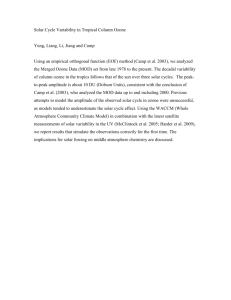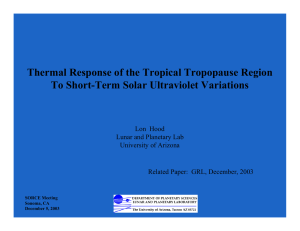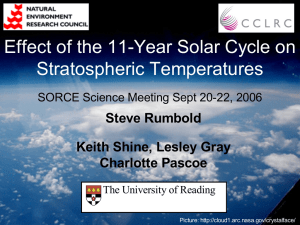Effect of the 11-Year Solar Cycle on Stratospheric Temperatures
advertisement
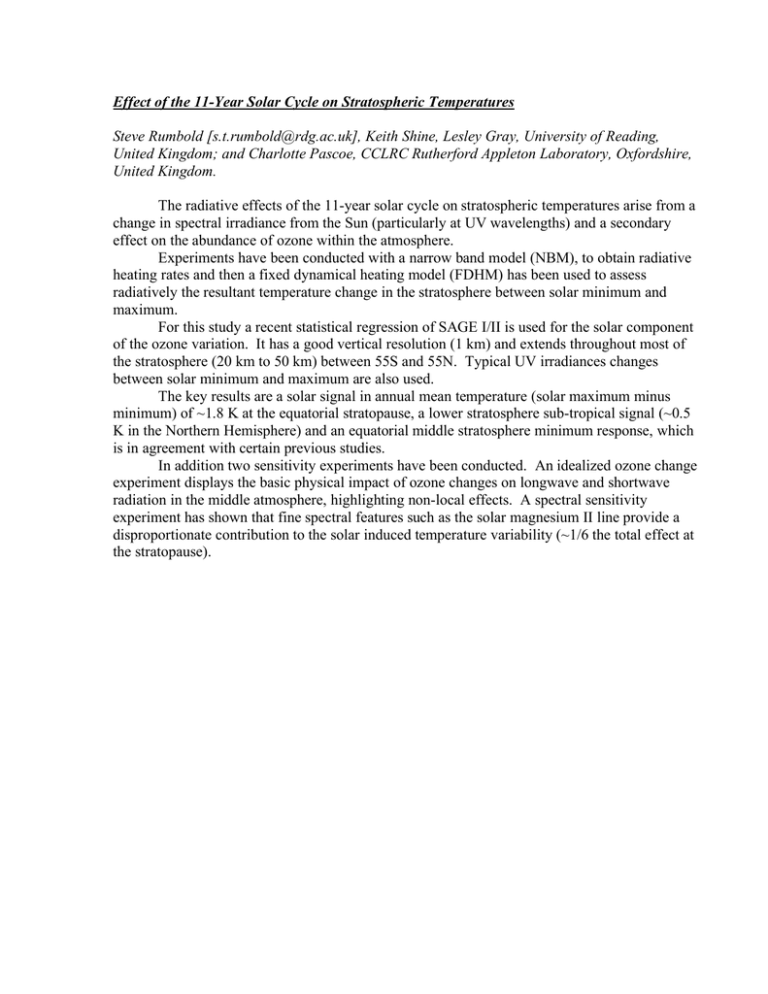
Effect of the 11-Year Solar Cycle on Stratospheric Temperatures Steve Rumbold [s.t.rumbold@rdg.ac.uk], Keith Shine, Lesley Gray, University of Reading, United Kingdom; and Charlotte Pascoe, CCLRC Rutherford Appleton Laboratory, Oxfordshire, United Kingdom. The radiative effects of the 11-year solar cycle on stratospheric temperatures arise from a change in spectral irradiance from the Sun (particularly at UV wavelengths) and a secondary effect on the abundance of ozone within the atmosphere. Experiments have been conducted with a narrow band model (NBM), to obtain radiative heating rates and then a fixed dynamical heating model (FDHM) has been used to assess radiatively the resultant temperature change in the stratosphere between solar minimum and maximum. For this study a recent statistical regression of SAGE I/II is used for the solar component of the ozone variation. It has a good vertical resolution (1 km) and extends throughout most of the stratosphere (20 km to 50 km) between 55S and 55N. Typical UV irradiances changes between solar minimum and maximum are also used. The key results are a solar signal in annual mean temperature (solar maximum minus minimum) of ~1.8 K at the equatorial stratopause, a lower stratosphere sub-tropical signal (~0.5 K in the Northern Hemisphere) and an equatorial middle stratosphere minimum response, which is in agreement with certain previous studies. In addition two sensitivity experiments have been conducted. An idealized ozone change experiment displays the basic physical impact of ozone changes on longwave and shortwave radiation in the middle atmosphere, highlighting non-local effects. A spectral sensitivity experiment has shown that fine spectral features such as the solar magnesium II line provide a disproportionate contribution to the solar induced temperature variability (~1/6 the total effect at the stratopause).
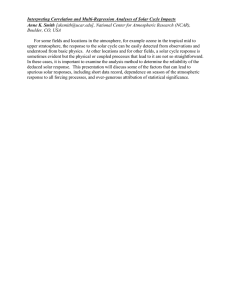


![Attribution of the 11-Year Solar Cycle in Lower-Stratospheric Temperature and... Ales Kuchar [], Eugene Rozanov , William Ball](http://s2.studylib.net/store/data/012725756_1-0e253eb2ba08316b8369ea70f516fffb-300x300.png)
